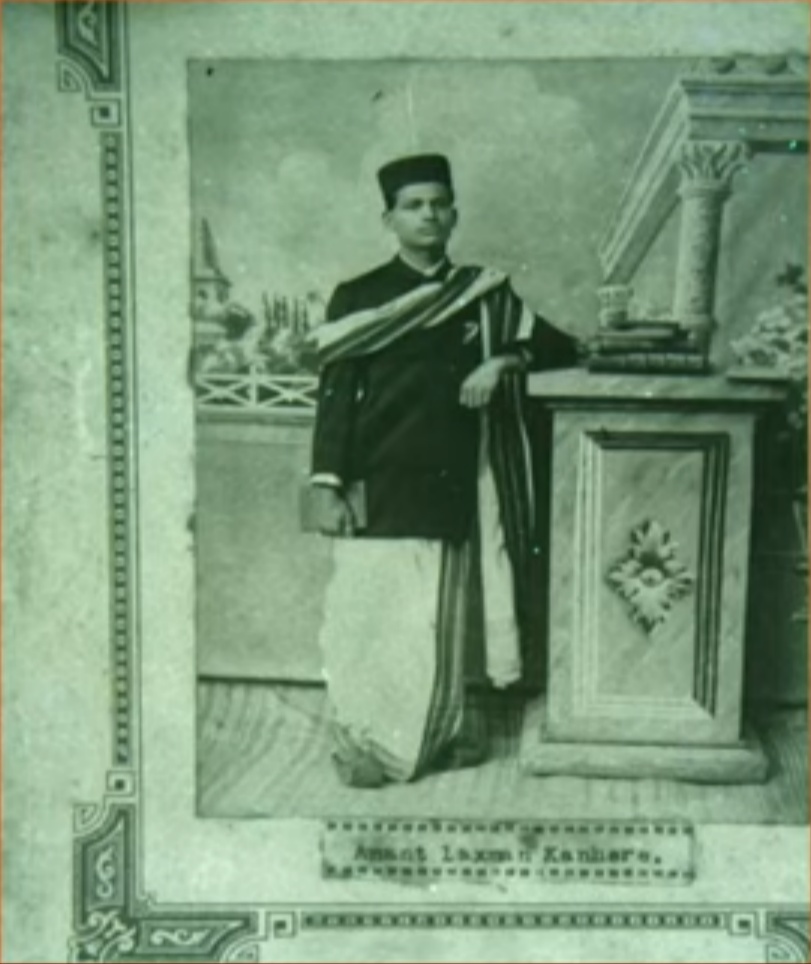
Anant Laxman Kanhere: A Fearless Indian Freedom Fighter from Nashik, Championing the Cause of Independence.
Date:

Share post:
Anant Laxman Kanhere was an Indian independence fighter from Nashik. Anant Laxman Kanhere was born on 7 January 1892 in Aayani (Anjani), a small village in Khed Taluka, Ratnagiri District in a Chitpavan Brahmin family. He completed his primary education in Nizamabad (which was then also called as Indur), and his English education took place in Aurangabad. In 1908, Kanhere returned to Aurangabad where he met with member of secret revolutionary groups. Gangaram had a friend at Yewale named Tonpe. He was member of the secret society of Nashik. One Ganu Vaidya used to visit Yewala to meet his relative. Vaidya and Gangaram once went to purchase weapon for the Nashik Secret Society. Anant acquainted with this Vaidya at Aurangabad.
He is one of the most underrated and unsung freedom fighters in India. At the age of 18, he sacrificed his life to free India from British Raj. He killed the Collector of Nashik, Jackson in British India on December 21, 1909. The murder of Jackson was an important event in the history of Nashik and the Indian revolutionary movement in Maharashtra.
Anant Laxman Kanhere (1892-1910) was an Indian independence fighter from Nashik. On 21 December 1909, he shot dead the Collector of Nashik in British India. The murder of Jackson was an important event in the history of Nashik and the Indian revolutionary movement in Maharashtra.
He completed his primary education in Nizamabad (which was then also called as Indur), and his English education took place in Aurangabad. In 1908, Kanhere returned to Aurangabad where he met with member of secret revolutionary groups. Gangaram had a friend at Yewale named Tonpe. He was member of the secret society of Nashik. One Ganu Vaidya used to visit Yewala to meet his relative. Vaidya and Gangaram once went to purchase weapon for the Nashik Secret Society. Anant acquainted with this Vaidya at Aurangabad.
Anant Laxman Kanhere decided to murder Nashik Collector Jackson after being inspired by the Savarkar brothers and Madanlal Dhingra The assassination was an important event in the history of Nashik and the Indian revolutionary movement in Maharashtra.

The Savarkar brothers were Indian independence activists who were instrumental in the Indian revolutionary movement in Maharashtra12. Vinayak Damodar Savarkar was a prominent figure in the movement and was arrested for his connections with the revolutionary group India House2.
He was a member of the Abhinav Bharat Society and was inspired by the Savarkar brothers and Madanlal Dhingra. He was eventually captured and hanged for rebellion against the British government.
Jackson, a British officer, was aware of these activities. He started mixing with people, unlike other British officers, and made an image of himself as a people-friendly officer. He told people that he was a Vedic-literate Brahmin in his previous life and that was why he felt affection towards the Indian people. He used to talk to people in Marathi and had knowledge of Sanskrit.
Kanhere, then 18 years old admitted his part in the killing. On 29 March 1910, the Chief Justice of Bombay found him guilty. He was hanged in the Thane Prison on 19 April 1910. Along with Kanhere, Karve and Deshpande were also hanged. The other accused in the case Shankar Ramchandra Soman, Waman alias Daji Narayan Joshi and Ganesh Balaji Vaidya were given Transportation of Life (Life imprisonment) punishment and Dattatraya Pandurang Joshi was sent to two years rigorous imprisonment. None of the relatives of these three were present during the executions. Their bodies were burnt by the prison officers rather than being released to the families, and the remaining ash was thrown in the sea near Thane.
On 21 December 1909, after Jackson had arrived to see the play, Kanhere jumped in front of him and fired four bullets at him from Browning pistol. Jackson was killed immediately. One of the Indian officers, Mr. Palshikar, and former DSP Mr. Marutrao Toradmal, attacked Kanhere with their batons. Other people present caught Anant Laxman Kanhere and he was not able to shoot himself or get the poison. A copy of paper written by Karve named “Murder for Murder” was discovered from him.
